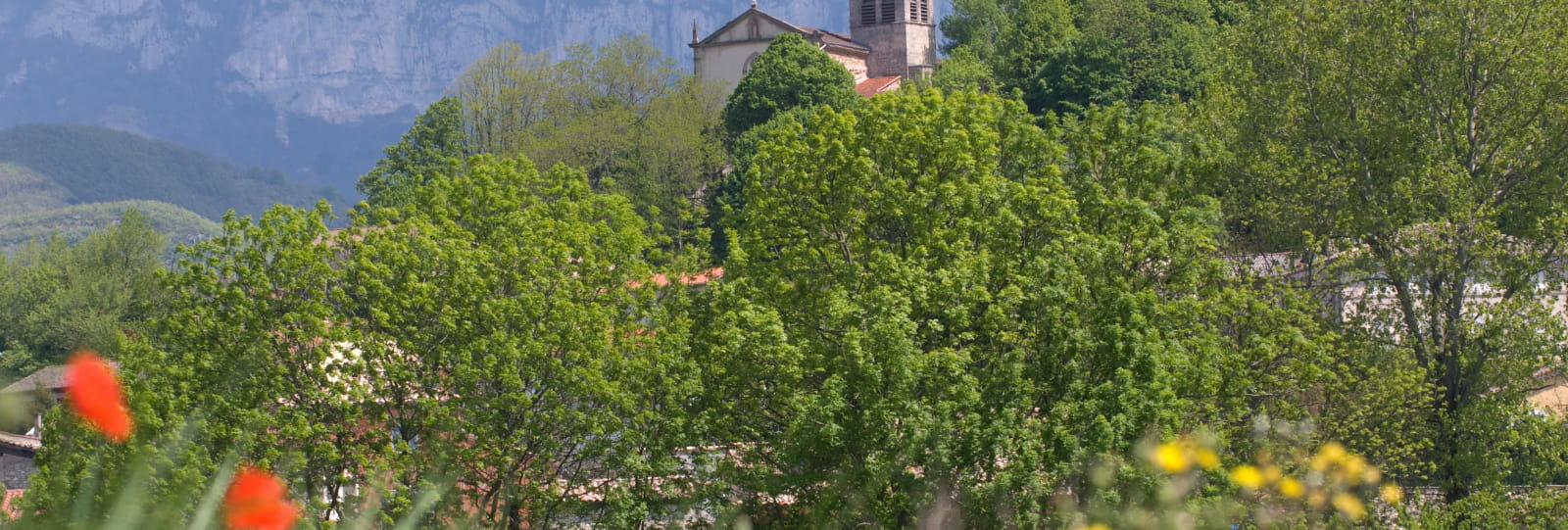
Charpey
Phone04 75 44 90 40
WebsiteSee the website
Charpey was the center of an important ancient mandement that also included the priory of Saint-Didier, the commandery of Saint-Vincent and the farming village of Bésayes. Destroyed in 1345 during the Episcopal War.
Number of inhabitants: 1,162
Area: 2,000 ha.
The Charpey district comprises two villages: Charpey, a circular village built on a hill, and Saint-Didier, a hamlet located on the plain.
Reminders of ancient times are still clearly in evidence in the countryside, where the mark left on the Valence Plain by the Roman legions is ever-present. Previously upgraded Gallo-Roman remains testify to this past, as does a milliary column since lost but that was used as a font in the Church of Saint-Didier during the last century. Erected by the Emperor Claudius II in about 270 AD, this milliary column might indicate the existence of a nearby Roman road through the Isère Valley.
Sights to see:
The circular village: In the Middle Ages Charpey was similar in appearance to the neighbouring Alixan. From atop the molasse hillock, the stately château and church overlook the village houses, which are packed inside ramparts pierced by gateways. Charpey was then among the estates of the powerful counts of Valentinois who competed directly for power with the Bishops of Valence. Soon the two parties were engaged in a ferocious struggle, known as the Episcopal War, funded by Charpey and its community. In the mid-14th century, the village was ruined. During the Wars of Religion, the village was pillaged again and the Church of Saint-Nicolas was burnt down.
Despite the disappearance of a large proportion of its built heritage, a few elements remain, such as the chevet and tower of the church, as well as sections of the medieval walls. The path traced by the concentric lanes further adds to the charm of the sightseeing experience. On top of the hillock, a viewpoint indicator allows you to enjoy a great perspective over the plain and the Monts du Matin mountains. On the site, where a dungeon once stood, a statue of the Virgin overlooks the village.
The Romanesque Church of Saint-Didier: Referred to in 1100, by the Middle Ages the little church of Saint-Didier belonged to the Benedictine monastery of Ile-Barbe in Lyon. The façade has a two-tier lay-out. The top and the rear part of the gable are modern. The stone used in the lower section is molasse. Less dense tufa rubble was used to dress the vault of the nave.
Opening
Through Valence Romans Tourisme





